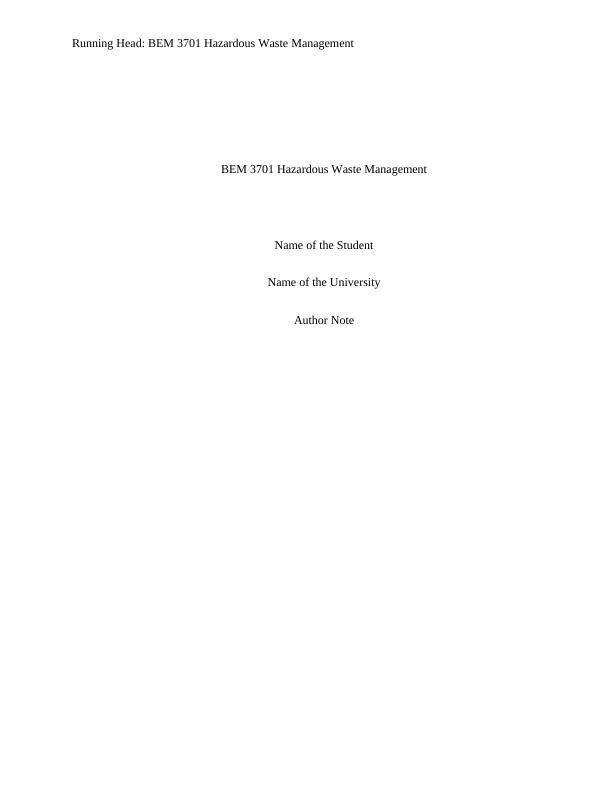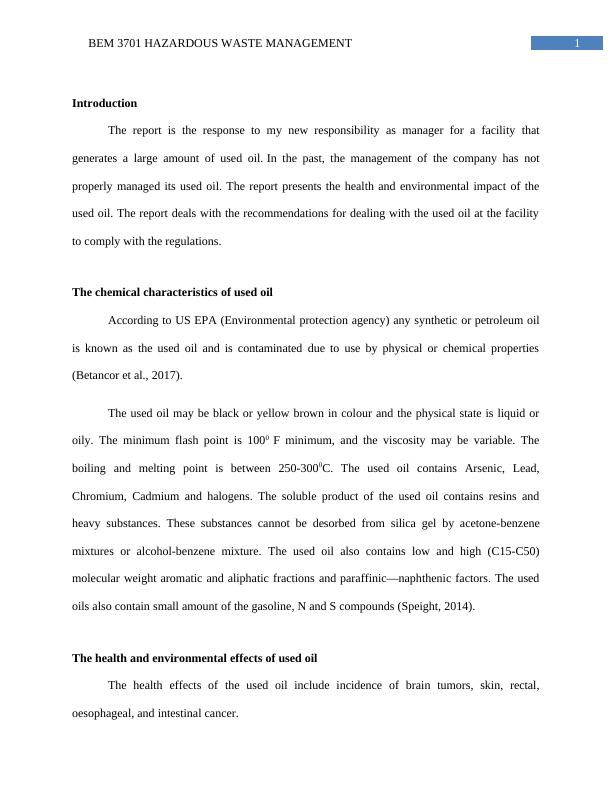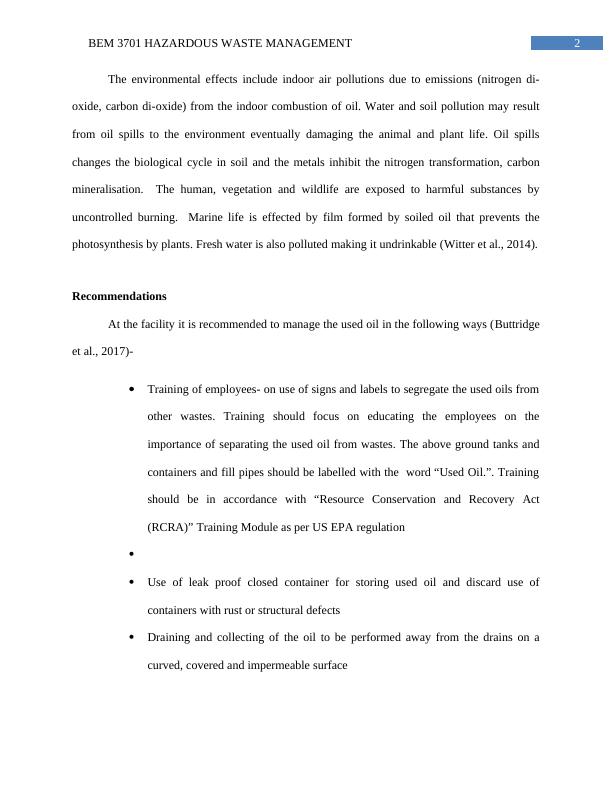BEM3701 Hazardous Waste Management | Report
Added on 2020-05-11
7 Pages1301 Words130 Views
Running Head: BEM 3701 Hazardous Waste ManagementBEM 3701 Hazardous Waste ManagementName of the StudentName of the University Author Note

1BEM 3701 HAZARDOUS WASTE MANAGEMENTIntroductionThe report is the response to my new responsibility as manager for a facility thatgenerates a large amount of used oil.In the past, the management of the company has notproperly managed its used oil. The report presents the health and environmental impact of theused oil. The report deals with the recommendations for dealing with the used oil at the facilityto comply with the regulations. The chemical characteristics of used oilAccording to US EPA (Environmental protection agency) any synthetic or petroleum oilis known as the used oil and is contaminated due to use by physical or chemical properties(Betancor et al., 2017). The used oil may be black or yellow brown in colour and the physical state is liquid oroily. The minimum flash point is 1000 F minimum, and the viscosity may be variable. Theboiling and melting point is between 250-3000C. The used oil contains Arsenic, Lead,Chromium, Cadmium and halogens. The soluble product of the used oil contains resins andheavy substances. These substances cannot be desorbed from silica gel by acetone-benzenemixtures or alcohol-benzene mixture. The used oil also contains low and high (C15-C50)molecular weight aromatic and aliphatic fractions and paraffinic—naphthenic factors. The usedoils also contain small amount of the gasoline, N and S compounds (Speight, 2014). The health and environmental effects of used oil The health effects of the used oil include incidence of brain tumors, skin, rectal,oesophageal, and intestinal cancer.

2BEM 3701 HAZARDOUS WASTE MANAGEMENTThe environmental effects include indoor air pollutions due to emissions (nitrogen di-oxide, carbon di-oxide) from the indoor combustion of oil. Water and soil pollution may resultfrom oil spills to the environment eventually damaging the animal and plant life. Oil spillschanges the biological cycle in soil and the metals inhibit the nitrogen transformation, carbonmineralisation. The human, vegetation and wildlife are exposed to harmful substances byuncontrolled burning. Marine life is effected by film formed by soiled oil that prevents thephotosynthesis by plants. Fresh water is also polluted making it undrinkable (Witter et al., 2014).Recommendations At the facility it is recommended to manage the used oil in the following ways (Buttridgeet al., 2017)-Training of employees- on use of signs and labels to segregate the used oils fromother wastes. Training should focus on educating the employees on theimportance of separating the used oil from wastes. The above ground tanks andcontainers and fill pipes should be labelled with the word “Used Oil.”. Trainingshould be in accordance with “Resource Conservation and Recovery Act(RCRA)” Training Module as per US EPA regulationUse of leak proof closed container for storing used oil and discard use ofcontainers with rust or structural defectsDraining and collecting of the oil to be performed away from the drains on acurved, covered and impermeable surface

End of preview
Want to access all the pages? Upload your documents or become a member.
Related Documents
PFAS Compounds, Soil Contaminations and Current Concerns in Australialg...
|9
|2247
|354
